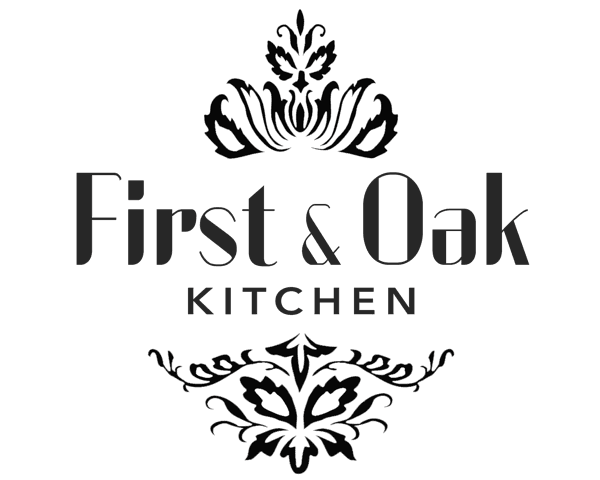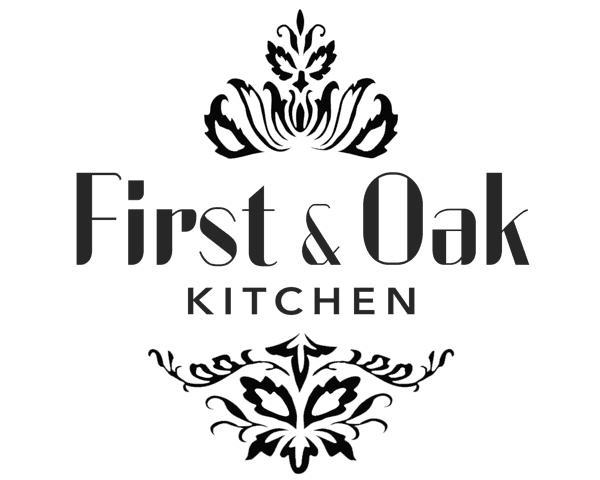Champagne Tip: How To Choose Champagne That You Like
- By Jonathan Rosenson
- •
- 03 Jan, 2018
- •
Champagne Tip: How To Choose Champagne That You Like

For those that are not experts don’t be intimidated by Champagne labels. French labels are confusing and never written in English (at least the ones that are drunk in France, if you see a label in English it’s only meant for the American market). A label will tell you the name of the winery, the appellation where it comes from, the year, and if it’s premier cru (1er Cru) or Grand Cru (GC); it will name the vineyard site. I’m not asking you to memorize every 1er Cru or GC site! That’s for the Somms to know. First things first, start with a wine shop, they specialize in wine. Prior to the days of massive markets, there were specialty shops who were experts on specialty items. Always head to your favorite local wine shop! They are tons of fun!
Next, let’s identify a wine style you enjoy. This might be difficult if you don’t know the wine styles of Champagne. I call them Champagne wines because we can’t forget they are predominately made from Chardonnay, Pinot Noir, & Pinot Meunier (they can be all one varietal or a blend, it’s up to the winemaker). What does a wine style truly mean? Here is a cheat sheet of Champagne styles.
Sweetness - While they are fermented dry they get a dosage (sugar, or wine and sugar) added to a Champagne to balance it out so your lips don’t pucker up from all the acidity. Champagne is so far North that it’s difficult to ripen grapes and when they do ripen they have mouth ripping acid that can be off the charts, so a little sweetness helps balance the wine. The wine ranges from extra brut (extra dry less than 6 grams of residual sugar) all the way to sweet called Doux. We find that a nice balance is somewhere between 5 grams and 10 grams, but I have tasted some wines with a 0 dosage that are lovely. I suggest asking about the Dosage level and remember what you enjoy. Remember it won’t be sweet like a soda, it will be sweet like a tart fruit.
Wine Styles - Some can very from citrusy that tend to be from 100% chardonnay. Some bubbles are light and delicate with tight bubbles, others are more fruit driven - think light red fruits like raspberry, pomegranate, strawberry. Those are often pinot noir and pinot meunier dominate. Then there is an autolytic characteristic that comes from aging the wine on the lees. The autolytic characteristic comes from the second fermentation process which happens in the bottle. The yeast cells age in the bottle and convert the remaining sugars into alcohol and releasing CO2 which carbonates the wine.
The yeast - This is Champagne’s signature characteristic and each house varies the time the wine ages on its lees. This in turn affects how autolytic the wine may be. The longer it ages the more baked bread or yeasty notes it imparts. Krug Rose smells like strawberry biscuits, but Krug is not cheap, and there are many other wines that are exceptional and a fraction of the price. A good wine shop will be able to tell you how long the wine has aged on its lees or at least be able to describe how yeasty a wine may be.
Now this is my two cents or words of wisdom: Buy something from a grower producer. What does that mean? It’s simple the person that grew the grapes makes the wine. This farmer knows their land, often times the land is passed down generation to generation. The region of Champagne is ancient, the style of wine was first made in 1693. Grower producers often make some really interesting and tasty wine. Did you know large Champagne Houses like Moet & Veuve Clicquot (Yellow Label) make over 10-26 million cases of wine? That’s a lot of wine! And one would have to imagine that it is very difficult to control the quality or nuances that each vineyard site has to offer. The level of craftsmanship is much different than a Champagne house that makes 3,000-10,000 cases of wine.
Fun fact: 80% of Champagne comes from these negotiant houses (like Moet) and they only own 12% of the vineyards in Champagne. I am not saying these wines are terrible, and some of their vintage wines can be very good (they are much smaller production). If you like Yellow Label then no problem, that’s the beauty of wine--everyone’s taste buds are different what you enjoy is what you enjoy. But what I am saying is that mass produced commodities lose many nuances that make many wines so fantastic. They become very monochromatic. One would think maybe there are some advantages in buying something from a large producer.
Economies of scale would suggest that the consumer should receive the best price point. But this is just wrong! Many of these mass-produced wines costs on average of about $40-$50 a bottle depending on the markup. Now do I have your attention? My last point to shop Grower Producer is that you can find a hand crafted, very small production wine, with exceptional quality priced between $35-$50 for NV wines. These wines come from specific sites that offer the unique nuances of each site's terroir and the winemaker’s style. And luckily for us that live in Southern California, so we are able to get allocations of these small production wines.
So, to recap how fruity do you want the wine? Do you enjoy citrus or do you prefer light fruit? Do you want the wine to be bone dry or to have some sweetness? Do you like that baked bread smell or are you looking for something fresh? Are you looking for something exceptionally sophisticated like a vintage wine (these wines are only made in exceptional years)? Or is a Non-Vintage more in your price range? Keep in mind that an N.V is a style that should taste relatively similar every year.
When you think Champagne pick a style, pick a price point, and pick a Grower Producer and share it with someone you care about.
“Champagne for my real friends and real pain for my sham friends” - Tom Waits
That’s what I always say!
Jonathan Rosenson
Sommerlier, CSW

Planning a wedding isn’t a small task by any means… from selecting a venue to choosing flowers, booking entertainment and finding the right photographer to capture it all! Then, on top of everything, you are asked to select a menu for all your guests to enjoy. Crafting your menu can be intimidating at first, but it is also an opportunity to personalize your special day.
When planning your wedding menu, from hors d’oeuvres to the reception, bar, and beyond, we hope you gain some inspiration from these wedding food trends that are currently taking the wedding world by storm.
1) Local, Organic, Farm-to-Table Fare
This is a trend that’s hardly confined to weddings! More and more couples are opting for quality over quantity, insisting on locally-sourced, organic food that supports sustainable agriculture and local businesses. Wedding caterers and event venues have gotten wise to the growing demand, and many now offer locally-sourced menu items as a result.
Some couples choose to share their “locally inspired menu” with their guests by noting on their displayed menus where some of the local ingredients are from.
2) Help Yourself Approach
Traditional weddings typically include a full-service dinner, where guests take their assigned seats and the professional wait staff serves their various courses. This is a lovely and classy option for couples who have asked their guests to provide their entrée choice prior to the wedding day.
For the couples, who prefer to allow their guests the flexibility to build their own dinner plate the night of the wedding, a buffet-style dinner is becoming more popular. This option also takes some pressure off of the couple to collect all of the individual entrée choices leading up to their day – one less thing to worry about! The buffet-style dining also offers a more relaxed, casual and social approach to the dinner hour.
First & Oak Kitchen Catering takes pride in the design and presentation of their stationary dinner displays and is always looking for new and exciting “station” ideas!
3) A Brunch-Style Wedding Menu
When most people think “wedding menu” they think of traditional dinner foods, but a lot of weddings are moving toward a more brunch-friendly menu – playing off the “breakfast for dinner” concept. This is due in part to the growing popularity of brunch in general, as well as more couples opting for daytime weddings. In any case, why not forego steak and salad for omelets, waffles, and French toast?
4) Comfort Foods
Many couples are taking an approach that’s more “comfort food” than fine dining. Think burgers and fries, fried chicken, pizza, grilled cheese sandwiches, spaghetti and meatballs, and more—just like mom used to make.
With this trend in mind, couples have an opportunity to expand on the personalization of their wedding menu, by bringing to life some of their favorite foods! Why not incorporate mac & cheese into the menu – by serving a perfect bite size mac & cheese appetizer?
5) Alternative Dessert Options
For decades—if not even longer—wedding cake has meant a tiered yellow cake with white frosting, ornate decoration, and a tiny bride and groom figure on the top.
This classic wedding dessert probably isn’t going anywhere any time soon, but a popular trend these days is taking a more personal approach. Couples are offering doughnuts, macaroons, ice cream, cheesecakes, pastries, cupcakes, and more. These sweet options are endless and they are an easy, fun way to make your wedding just a little more unique. And for those that love dessert, why not have both!?
6) Late-Night Snacks
Although your wedding guests will be plenty satisfied after this delicious dinner you’ve planned for them, there is still likely to be plenty of drinks and dancing to follow. Just the thing to work up another appetite!
Many wedding menus are now incorporating a “late night snack” portion. Something small like sliders, cookies, or other finger foods are ideal—just be sure to keep them close to the dance floor!
7) Craft Cocktails
Beer, wine, and a gin and tonic or two are par for the course at plenty of weddings, but that doesn’t mean there’s no room for something with a little more flair. Consider offering your guests craft cocktails with unique recipes and ingredients – maybe something to reflect the couple’s favorite cocktails or something perfectly designed for the season, such as a lavender spiked lemonade in the Spring or a mulled apple cider in the Fall.
First & Oak Kitchen can accommodate any style for your special day. Give our experts a call to schedule a consultation with our catering team.

